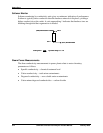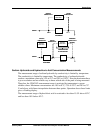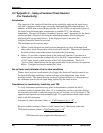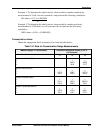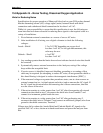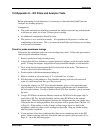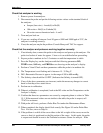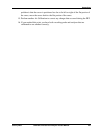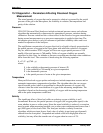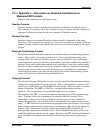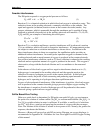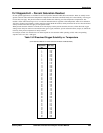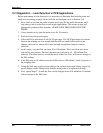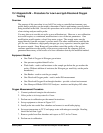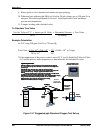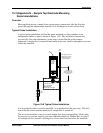
Appendices
222 UDA2182 Universal Dual Analyzer Product Manual January 2009
15.10 Appendix I – Parameters Affecting Dissolved Oxygen
Measurement
The actual quantity of oxygen that can be present in solution is governed by the partial
pressure of the gas in the atmosphere, the solubility in solution, the temperature and
purity of the solution.
Pressure
UDA2182 Universal Dual Analyzers include an internal pressure sensor and software
algorithm that automatically compensates for atmospheric pressure variations during
calibration. Pressure variations have a direct effect on the dissolved oxygen concentration
during normal measurement so no pressure compensation is applied at that time. The
information given below is only for reference to published solubility tables and is not
needed for operation of the Analyzer.
The equilibrium concentration of oxygen dissolved in a liquid is directly proportional to
the partial pressure of oxygen in the vapor phase with which the solution is in contact.
Dry air, which contains 20.9% oxygen, will have an oxygen partial pressure of 159
mmHg if the total pressure is 760 mmHg. Tables of oxygen solubility are normally
referenced to this value. An altitude or pressure correction must be made when conditions
differ from this level. The correction is made using the following equation:
S = S’ (P - p)/(760 - p)
where:
S is the solubility at barometric pressure of interest (P)
S’ is the solubility at 760 mmHg at a given temperature
P is the barometric pressure
p is the partial pressure of water at the given temperature
Temperature
Honeywell dissolved oxygen probes and analyzers include temperature sensors and an
automatic temperature compensation algorithm. The algorithm takes the raw oxygen
signal from the probe (which is proportional to the partial pressure of oxygen) and
converts it into the actual concentration of oxygen at the measuring temperature. The
algorithm is based on the decreasing solubility of oxygen with increasing temperature
and on the probe temperature coefficient.
Salinity
The significant effect of dissolved solids on reducing oxygen solubility is well
documented. However, the partial pressure of oxygen (raw oxygen probe signal) is the
same whether in pure or saline water. Since the actual solubility is reduced, a correction
must be made when measuring brackish, sea or other water containing much more than 1
ppt (1000 ppm) of dissolved solids. The Analyzer includes a salinity correction
algorithm, which uses input from a fixed value of salinity in ppt (parts-per-thousand)
entered from the front panel. Suspended and settled solids have negligible effect on
solubility, but may affect the transfer rate of oxygen when in excess of 2%.



